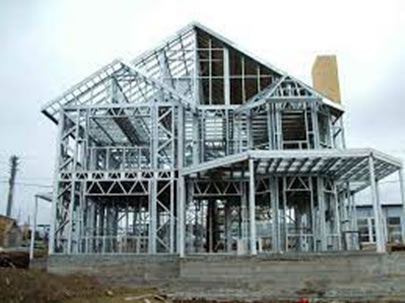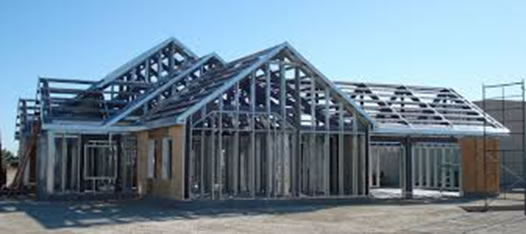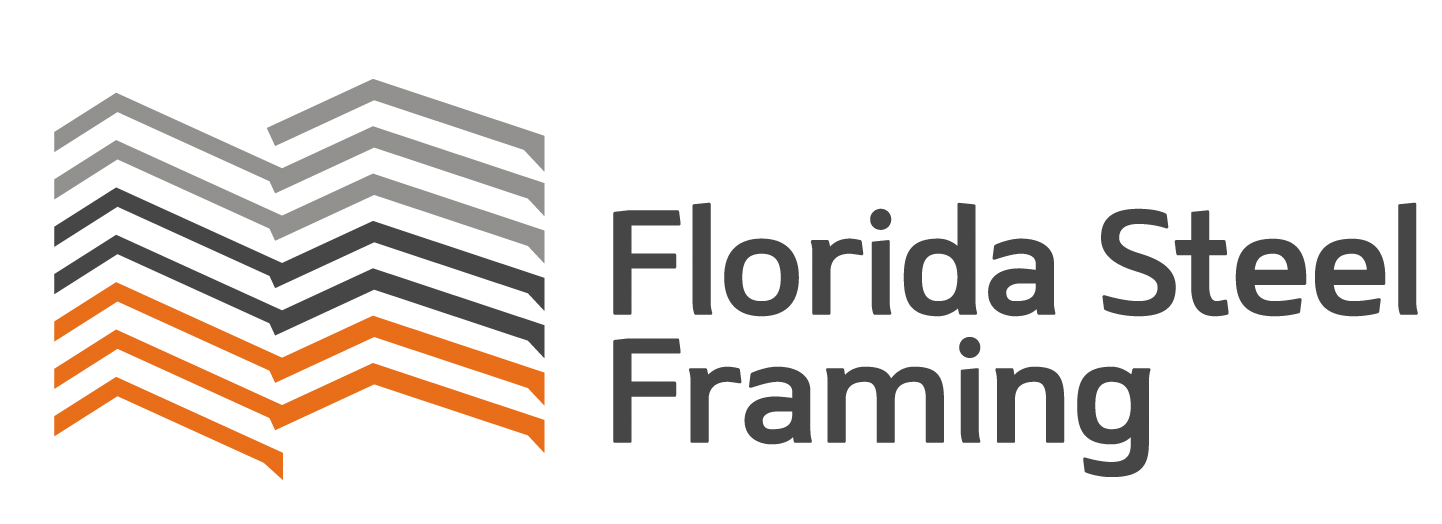Steel Framing Construction


What’s driving the shift towards alternative methods of construction, including social, political and environmental drivers?
Traditional methods of construction are struggling to keep up with the international demand for better, more efficient and affordable buildings. As a result, many in the construction industry are turning to alternative methods to solve their problems. And one emerging technology is leading the way is Steel Framing Construction. It is revolutionizing the way buildings are created.
Steel Framing Construction is offering improved quality, speed of construction, design flexibility and environmental performance, these modern methods are financially attractive alternatives to slower, resource-heavy traditional methods of construction, such as timber, concrete and hot-rolled steel.
Intelligent Integrated CAD Software
Intelligent integrated CAD software makes the process of engineering, designing and detailing each project fast, simple and highly accurate. Our software suite integrates design, engineering calculations, structural analysis, detailing and roll forming machine control. Providing extreme accuracy and efficiencies in the construction process, reducing costs of engineering, design, waste and labor. Additionally, our software provides end-to-end process integration in the design and production of steel framing buildings with manufacturing solutions. With our software you will improve your design efficiency and minimize project delays wherever you are in the world.



Key Reasons why Steel Framing is a Superior Construction Method for the Future
Reason 1
Speed of Construction
Steel Framing construction is faster than traditional methods to manufacture and construct buildings.
- Design and specification phase.
Steel Framing construction is a design-led process, meaning that the need for skill to construct the building is more in the design stage and less so on-site. Utilizing a sophisticated design and engineering software that is incredibly accurate, reducing the need for engineer involvement during the detail design, speeding up compliance, reducing engineering cost and minimizing room for error on-site.
- Manufacturing phase
Steel frames and components are produced and fabricated from structural quality steel coils and are shaped at ambient temperatures by roll-forming machines. They can be produced in large quantities and at high speed with consistent quality and precision. The wide range of advanced tooling functions provided by systems allow high productivity and versatile output to produce roof trusses, wall frames, and floor joists — all to exact measurements, saving time and costly wastage in the construction stage. Detailed design speeds up compliance, reduces engineering cost and minimizes room for error on-site.
- Construction phase:
The Steel frames are preassembled, strong and straight, and clearly identifiable. No on-site, welding or cutting is normally required. This means that the erection process is fast and simple – requiring less labor time on-site and heavy lifting equipment. Steel frames do not absorb moisture so there is no delay waiting for frames to dry. This means minimized weather delays for rain, snow, or excessive heat for example.
Steel Framing construction can offer a much more predictable construction schedule and less on-site cost than traditional construction methods. For example, as the material is lightweight, no heavy lifting equipment is needed on-site, frames, trusses and joists can typically be carried into place by on-site labor. Frames are made to precise dimensions meaning pre-made windows, doors and bathrooms will fit perfectly and quickly reducing engineering cost and minimizing room for error on-site.

Shorter construction times reduce the hard costs of a project. Buildings using Steel Framing are able to go up much faster than traditional heavy materials like concrete and masonry. The schedule of a mid-rise project can be reduced by 3 months or more.
Reason 2
Reduced Need for Highly Skilled Labor
The rise in popularity of Steel Framing construction can be attributed in part to its ease of construction. Lightweight designs, ‘pre-fabricated’ frames, uniform quality, and quick and simple erection on-site using basic tools – all these factors reduce the need for highly skilled labor.
Using less skilled labor for shorter periods of time on-site has obvious bottom-line benefits. But importantly Steel Framing enables construction in challenging locations or in areas where access to skilled labor is limited – creating jobs and opening up more opportunities for developers and builders. And for this reason, Steel Framing provides an attractive business proposition for trades looking to diversify their businesses. Experienced trades people find it very easy to transition to Steel Framing, and with assistance and training, traditional trades who understand the fundamentals of building construction can adapt to Steel Framing very quickly. Assembly drawings and information can easily be shared with tradespeople on the job site via a smart phone or tablet.
Steel Framing is a design led process that shifts the skill of the construction process upstream, with emphasis on the design phase. Extremely accurate design software enables the automation of engineering calculations and status reports, speeding up the specification process, changing the quality of output and reducing the need for skilled labor on-site. All this adds up to a faster, better quality construction process.
Reason 3
Faster Return on Investment
Return on investment (ROI) is obviously a critical aspect of the financial analysis of any property development opportunity. When a property can be acquired and developed in a short period of time the return on investment is realized faster and the response to satisfy immediate market demand is greater.
Designing and building with Steel Framing can lower both construction delays and long-term building ownership costs contributing to both immediate and long term ROI of building ownership in the following ways:
- Steel Framing construction is cost competitive compared to traditional methods and, depending on the building design, can be cheaper when evaluating the overall build and ownership cost due to its advantages in speed of construction, accuracy and reduced labor costs.
- With Steel Framing construction, logistics can be simplified; Using compact steel coils compared to the bulk and weight of transporting traditional materials, especially in dense urban environments or to remote locations.
- Steel Framing is strong while also being light, so it can be assembled easily without the need for heavy lifting equipment and no specific tools except a screw gun — saving on time, labor and cost.
- Discounts on builder’s risk insurance for steel framed structures can also result in significant cost savings.
- There is also less waste — with traditional methods, material wastage can be up to 20%, meaning that for every 5 buildings constructed, one is wasted. With Steel Framing, waste is virtually nonexistent.
- Structural grade steel is consistent – it doesn’t have a weak direction or grain and is not reliant on water-cement ratios for strength. Therefore, high consistency means common building delays that erode developer profits are dramatically reduced.
- Long-term building maintenance costs are reduced as steel is stable, resistant to rot, mold, termite and insect infestation.
- Steel Framing construction is also highly scalable, which means it is an ideal solution for mass production and repeatable designs. This scalability provides a much needed answer to areas in which there is a huge shortage in affordable, quality housing and community buildings, specifically in developing countries.
Why Steel Framing Buildings are Better?
Better quality buildings
Buildings constructed in Steel Framing are stronger, straighter and more stable than traditional materials:
- Steel framing is straight, stable and delivers dimensional accuracy, enabling consistently straight walls, square corners, and an overall superior finish. This exactness helps follow-on trades fit internal linings, doors, kitchens, and other cupboards.
- The stability of steel means no contraction or expansion with moisture changes, so frames won’t bend, warp, twist or shrink. Building owners will enjoy straight walls, square corners and smooth flush surfaces for the entire life of the building.
- Cladding and linings properly installed will not budge, crack, pop or break as they might with timber frame construction as the timber moves.
- As steel is an inorganic material, it is not affected by pests such as termites, ants and wood boring beetles, which are notoriously problematic for timber framed structures.
Healthier, more sustainable buildings.
Steel Framing buildings are healthier, more energy efficient and enable more sustainable living for the life of the building:
- Steel Framing sub-assemblies can be constructed with high R-value materials, which relate to higher levels of thermal insulation. When constructed using best practices, Steel Framing houses have the ability to stay warmer in cold environments and cooler in high temperature locations.
- Steel does not contain additional preservative chemicals and won’t give off gases or emit volatile organic compounds.
- Steel doesn’t support mold growth or rot – listed as one of the top 10 home pollutants connected to heart and lung disease and shortened life expectancy.
The ideal material to build with in seismic zones.
The Steel Framing’s high strength to weight ratio and non-combustibility means that it behaves better than traditional materials in earthquakes and fires making it the ideal material for seismic zones.
- Steel absorbs energy. Unlike concrete and masonry, ductile steel is able to be bent without breaking. It’s ability to absorb earthquake energy and dissipate its force makes it perfect for construction in earthquake areas.
- During an earthquake, heavier structures are usually affected more by the shaking than lighter structures. Steel is much lighter and more resilient than traditional construction materials.
- Steel Framing sections are very securely connected, using screws. Steel framing has a predictably consistent load path. Unlike other materials steel doesn’t contain corrosive chemicals or moisture that can damage connectors or fasteners.
- Steel is a non-combustible, fire-resistant material that will not feed a fire. On average, wood structural members or framing rank third as the first-ignited material in home fires according to the (U.S) National Fire Protection Association.
- Steel is consistently strong and reliable. Unlike other materials it doesn’t have a direction where it is weaker nor is it dependent on water-cement ratios to give it strength.
